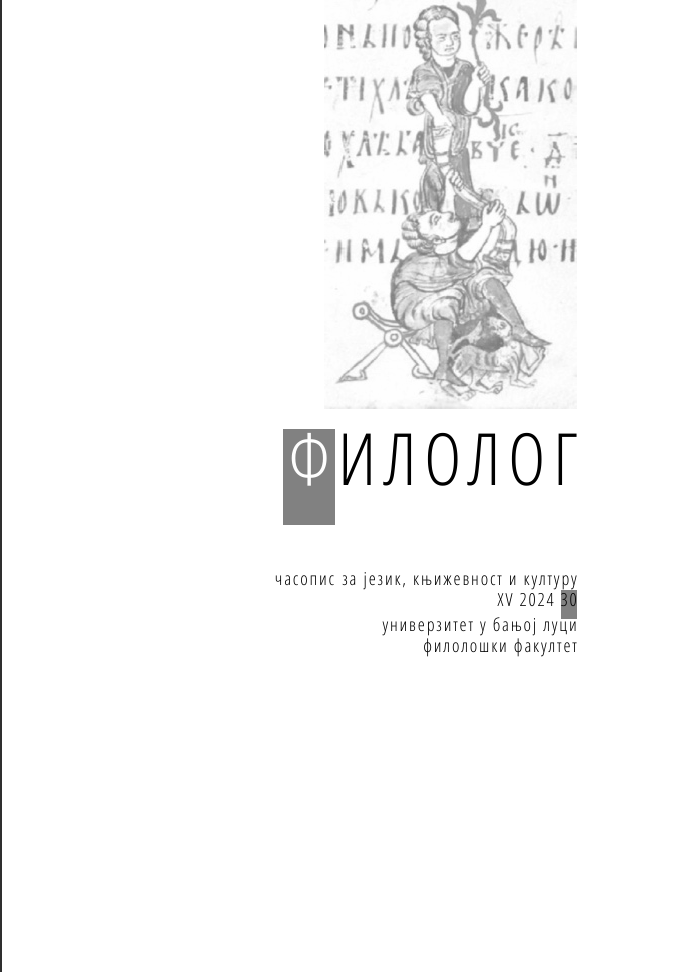Collocations in Teaching German as a Foreign Language: Theoretical Framework and Learning Strategies
DOI:
https://doi.org/10.21618/fil2430231nKeywords:
collocations, collocational competence, collocation learning strategies, foreign language, German languageAbstract
Collocations represent a segment of the lexicon that poses a significant challenge for all learners of a foreign language. However, this aspect does not receive attention in teaching practice proportional to its importance. The reasons for this vary, including teaching approaches, the quality of teaching materials, and the habit of teaching and learning words as isolated units rather than as lexical combinations. This paper aims to deepen the understanding of relevant theoretical discussions on the conceptual definition of collocations from the perspective of glottodidactics, their utility in the process of learning German as a foreign language, as well as collocational competence, which is considered one of the fundamental but also most demanding goals of language instruction. Taking into account the specificity and relevance of this linguistic phenomenon, the paper provides concrete proposals for strategies and activities that contribute to creating an educational environment in which students are sensitized to the recognition, understanding, and use of collocations. Developing awareness of collocations and integrating them into teaching are key steps towards improving students' lexical competence. Implementing the described strategies on a specific sample and over an extended period would help to assess their effectiveness in teaching practice.
References
Bahns, J., & Sibilis, U. (1992) Kollokationslernen durch Lektüre. Neusprachliche Mitteilungen aus Wissenschaft und Praxis. 45(3), 158–163.
Ďurčo, P., M. Vajičková (2017) Kollokationen im Unterricht: Ein Lehr- und Übungsbuch. Nümbrecht, Kirsch Verlag.
Hausmann, F. J. (1984) Wortschatzlernen ist Kollokationslernen. Zum Lehren und Lernen französischer Wortverbindungen. Praxis des neusprachlichen Unterrichts. 31 (4), 395–406.
Hausmann, F. J. (1985) Kollokationen im Deutschen Wörterbüchern. Ein Beitrag zur Theorie des lexikografischen Beispiels. Bergenholtz, H. & Mugdan, J. (Hg.) Lexikographie und Grammatik. Akten des Essener Kolloquiums zur Grammatik im Wörterbuch vom 28. bis 30.06.1984. Tübingen, Max Niemeyer, pp. 118–129.
Hausmann, F. J. (2003) Kollokationen in der Fachsprache: Schwerpunkt Französisch. Jung, Udo O. H. & Kolesnikova, A. (Hg.) Fachsprachen und Hochschule. Frankfurt a. M. etc., Lang, pp. 83–92.
Hausmann, F. J. (2004) Was sind eigentlich Kollokationen?. Steyer, K. (Hg.) Wortverbindungen–mehr oder weniger fest. Berlin / New York, Walter de Gruyter GmbH & Co KG, pp. 309–334.
Häcki Buhofer, A. (2014) Feste Wortverbindungen des Deutschen: Kollokationenwörterbuch für den Alltag. Narr Francke Attempto Verlag.
Hill, J., M., Lewis & M., Lewis (2000) Classroom strategies, activities and exercises. Lewis, M. (Hg.). Teaching collocation: Further Developments in the Lexical Approach. Language Teaching Publications, Hove England, pp. 88–124.
Cohen, A. (1998) Strategies in Learning and Using a Second Language. New York, Addison Wesley Longman.
Radić-Bojanić, B. (2021). EFL Vocabulary Learning Strategies Among High School Students. Nastava i vaspitanje. 70(1), 25–36.
Reder, A. (2006) Kollokationen in der Wortschatzarbeit. Wien, Praesens.
Reder, A. (2011) Kommen Kollokationen in Mode? Kollokationskonzepte und ihre mögliche Umsetzung in der Didaktik. Linguistik online, 47(3), 131–140.
Reder, A. (2013) Kollokationen in Theorie und Praxis. Pécs, Universität Pécs.
Schmitt, N., & Schmitt, D. R. (1993) Identifying and Assessing Vocabulary Learning Strategies. Thai TESOL Bulletin. 5(4), 27–33.
Targońska, J., & Stork, A. (2013) Vorschläge für ein neues Modell zur Beschreibung und Analyse lexikalischer Kompetenz. Zeitschrift für Fremdsprachenforschung, 24(1), 71–108.
Targońska, J. (2014a) Kollokationen – ein vernachlässigtes Gebiet der DaF-Didaktik? Linguistik online. 68, 127–149.
Targońska, J. (2014b) Lexikalische Strategien der Germanistikstudierenden zu ihrem Studienbeginn. Lingwistyka Stosowana. 9, 171–200.
Targońska, J. (2015a) Kollokationen in DaF-Lehrwerken – eine empirische Studie zur Widerspiegelung der Kollokativität der Sprache in ausgewählten Lehrwerken. Zielsprache Deutsch. 42 (3), 3–24.
Targońska, J. (2015b) Theoretische Überlegungen zu Kollokationen in DaFLehrwerken. Prace Językoznawcze. 17(3), 125–136.
Targońska, J. (2022) Lässt sich die Kollokationskompetenz ohne explizite Kollokationsschulung im institutionellen Fremdsprachenunterricht fördern? Bulletin suisse de linguistique appliquée. 115, 91–116.
Downloads
Published
How to Cite
Issue
Section
License

This work is licensed under a Creative Commons Attribution-NonCommercial-NoDerivatives 4.0 International License.








